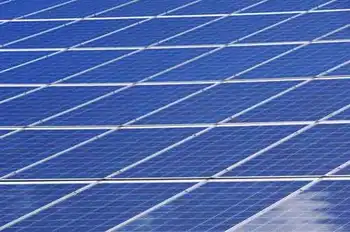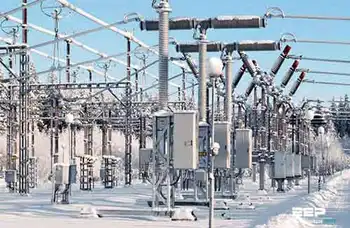STOCKTON, CALIFORNIA - Monthly home heating bills from PG&E are expected to jump by more than 30 percent from December to January, the utility estimates.
But the relatively good news is that for the most part, natural-gas prices, which must be passed on directly to customers by the utility without markup, have been stable in a volatile market where suppliers have had trouble meeting demand across the country for three years. January typically is the coldest winter month, when home heating systems turn on more often and run longer. For the residential customer, the PG&E natural-gas bill for January will average $109.04, up from $83.40 in December. Most of that cost increase will be because natural-gas customers will use more gas to keep warm in a colder January, said PG&E spokeswoman Emily Barnett. The utility is projecting that average home use will jump from 71 therms in December to 90 this month. PG&E also just put in place a 3.1 percent increase in the average rate charged to residential customers for natural gas. That increase will run through 2007 and is intended to cover rising costs within the natural-gas industry of moving and storing the fuel, Barnett said. The rate increase is set by the California Public Utilities Commission. The utility said that with colder than normal temperatures, it expects heavier draws on underground storage, which could affect the market in the spring and summer. PG&E builds up its reservoirs for the winter during summer, when prices run lower. Barnett said tapping storage heavily now can mean the PG&E would have to buy additional natural gas at the higher prices. For the past several years, natural-gas prices have been historically high, with producers struggling to keep up with demand. PG&E customers have felt the repercussions of that. For example, the average residential monthly natural-gas bill, based on usage of 75 therms, in December, January and February of last winter was $75, according to PG&E. That was up from a $67 monthly average the winter before and from $51 per month in the winter of 2001-02. Mark Stultz, a spokesman for the Natural Gas Supply Association, said that it's been three consecutive years of a tight gas market. Still, even with prices running historically high, prices have been stable. "So far, we're in pretty good shape with gas production and storage," he said. As always, though, prolonged, bitter cold snaps can sharply change the balance of market supply-and-demand, he said. Local sellers and installers of double-paned glass windows and doors report that the long run of higher natural-gas prices has bumped up business for them. George Nahas, owner of Tailor Made Windows, said he's having the best season in 28 years for sales and installations of double-pane glass windows and doors. Interest rates are low, which makes borrowing easier, he said, and investing in homes is big these days, too. So far, Nahas said, he's had $1.5 million in sales, which isn't bad for a small business with one salesperson. "It's great to be in the right business at the right time." Liz Lopez, a Morada-area resident, paid $1,500 for a double- paned 8-foot-wide sliding patio door and expects to get plenty of gas-bill savings, not to mention fewer drafts coming into the back of her home. Her mother and grandmother had both raved about getting double- paned windows and doors in their homes, she said, so she decided the investment would be worth it. She'll also get a rebate of about $50 from Pacific Gas & Electric for making the changeover. Next year, she'll replace all the house windows with double-pane windows, complete with argon gas insulation between panes and a coating to keep solar heat outside in the summer and the warmth of the house heating in the winter, Lopez said. Tony Johnson, co-owner of Rod Johnson Air & Windows, said double- paned windows and doors can cut heating costs by as much as 10 percent. Most of his customers, though, are motivated because they're tired of leaks and even drafts through and around old windows and doors, he said. One of his recent customers, Yvette Espinoza, is delighted that she and husband Vince invested $4,000 in new double-pane windows and a patio door. The heating bills have gone down somewhat for their nearly 30- year-old home with hardwood floors because the heating system kicks on less often, she said. Mainly, even with the thermostat down to about 65 degrees or so, it's finally comfortable inside without the leakage of cold air through the windows, she said. "At night my kids are even usually complaining about it being too hot."
January typically is the coldest winter month, when home heating systems turn on more often and run longer. For the residential customer, the PG&E natural-gas bill for January will average $109.04, up from $83.40 in December.
Most of that cost increase will be because natural-gas customers will use more gas to keep warm in a colder January, said PG&E spokeswoman Emily Barnett.
The utility is projecting that average home use will jump from 71 therms in December to 90 this month.
PG&E also just put in place a 3.1 percent increase in the average rate charged to residential customers for natural gas. That increase will run through 2007 and is intended to cover rising costs within the natural-gas industry of moving and storing the fuel, Barnett said.
The rate increase is set by the California Public Utilities Commission.
The utility said that with colder than normal temperatures, it expects heavier draws on underground storage, which could affect the market in the spring and summer.
PG&E builds up its reservoirs for the winter during summer, when prices run lower. Barnett said tapping storage heavily now can mean the PG&E would have to buy additional natural gas at the higher prices.
For the past several years, natural-gas prices have been historically high, with producers struggling to keep up with demand.
PG&E customers have felt the repercussions of that. For example, the average residential monthly natural-gas bill, based on usage of 75 therms, in December, January and February of last winter was $75, according to PG&E.
That was up from a $67 monthly average the winter before and from $51 per month in the winter of 2001-02.
Mark Stultz, a spokesman for the Natural Gas Supply Association, said that it's been three consecutive years of a tight gas market.
Still, even with prices running historically high, prices have been stable.
"So far, we're in pretty good shape with gas production and storage," he said.
As always, though, prolonged, bitter cold snaps can sharply change the balance of market supply-and-demand, he said.
Local sellers and installers of double-paned glass windows and doors report that the long run of higher natural-gas prices has bumped up business for them.
George Nahas, owner of Tailor Made Windows, said he's having the best season in 28 years for sales and installations of double-pane glass windows and doors.
Interest rates are low, which makes borrowing easier, he said, and investing in homes is big these days, too.
So far, Nahas said, he's had $1.5 million in sales, which isn't bad for a small business with one salesperson.
"It's great to be in the right business at the right time."
Liz Lopez, a Morada-area resident, paid $1,500 for a double- paned 8-foot-wide sliding patio door and expects to get plenty of gas-bill savings, not to mention fewer drafts coming into the back of her home.
Her mother and grandmother had both raved about getting double- paned windows and doors in their homes, she said, so she decided the investment would be worth it.
She'll also get a rebate of about $50 from Pacific Gas & Electric for making the changeover. Next year, she'll replace all the house windows with double-pane windows, complete with argon gas insulation between panes and a coating to keep solar heat outside in the summer and the warmth of the house heating in the winter, Lopez said.
Tony Johnson, co-owner of Rod Johnson Air & Windows, said double- paned windows and doors can cut heating costs by as much as 10 percent. Most of his customers, though, are motivated because they're tired of leaks and even drafts through and around old windows and doors, he said.
One of his recent customers, Yvette Espinoza, is delighted that she and husband Vince invested $4,000 in new double-pane windows and a patio door.
The heating bills have gone down somewhat for their nearly 30- year-old home with hardwood floors because the heating system kicks on less often, she said.
Mainly, even with the thermostat down to about 65 degrees or so, it's finally comfortable inside without the leakage of cold air through the windows, she said.
"At night my kids are even usually complaining about it being too hot."
Related News

New clean energy investment in developing nations slipped sharply last year: report
BEIJING - New clean energy investment slid by more than a fifth in developing countries last year due to a slowdown in China, while the amount of coal-fired power generation jumped to a new high, a recent annual survey showed.
Bloomberg New Energy Finance (BNEF) surveyed 104 emerging markets and found that developing nations were moving towards cleaner power sources, but not fast enough to limit carbon dioxide emissions or the effects of climate change.
New investment in wind, solar and other clean energy projects dropped to $133 billion last year from $169 billion a year earlier, mainly due to a slump…




